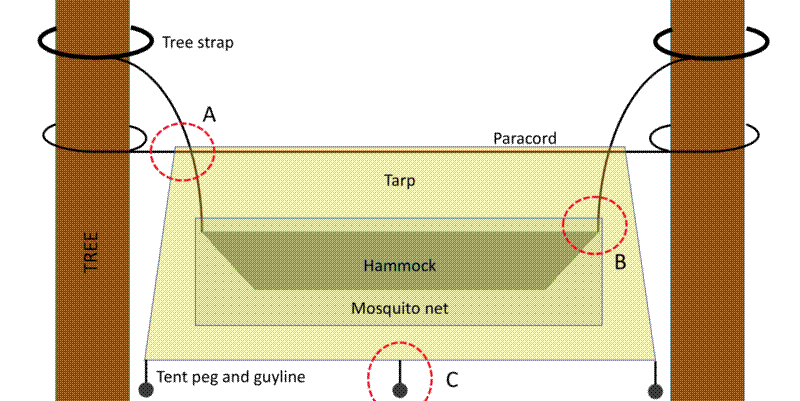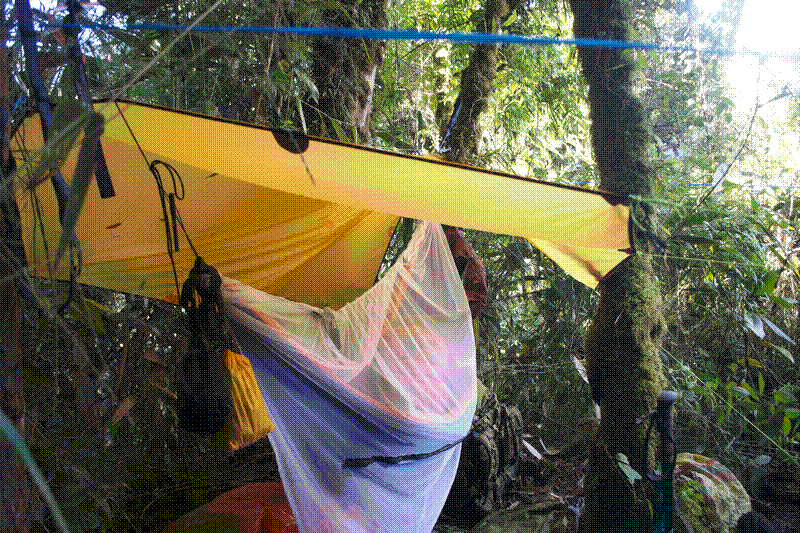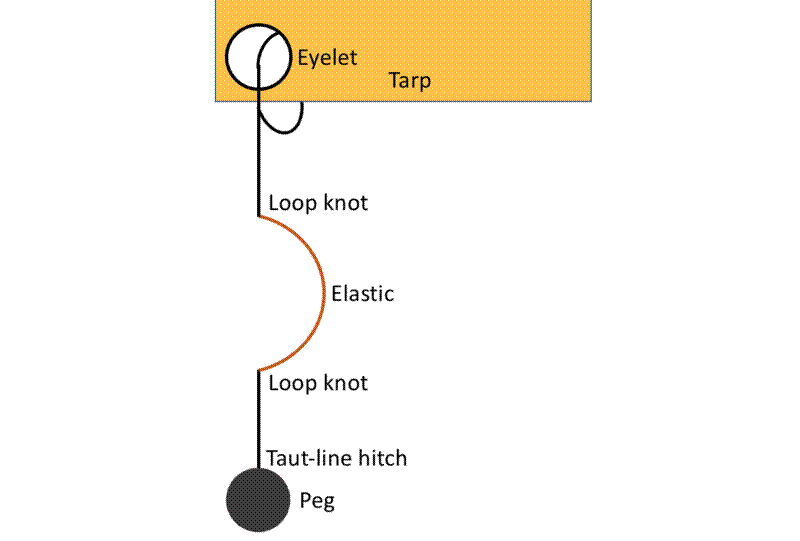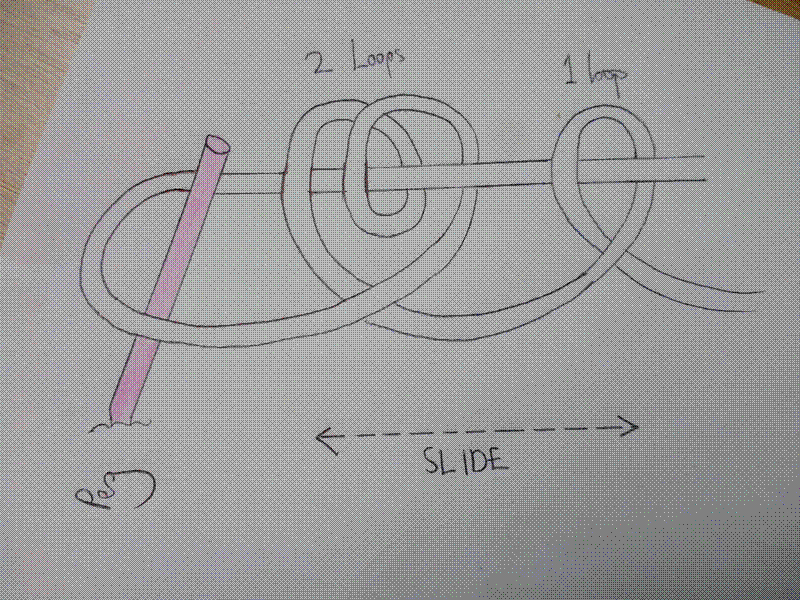When I went to Peru in the Madre de Dios as a field assistant in 2015 I decided on the recommendation of a friend who had been before to camp using a hammock rather than a tent. It worked out really well, I was off the ground which meant that everything stayed much drier, and one I got used to sleeping in the hammock I slept very soundly. I’ve recently started sleeping in the hammock again, on little overnight trips at the weekends, so I wanted to share what equipment I use and how I use it.
This is the equipment that I used when I was in Peru.
- Alpkit Rig 7 tarp
- Grand Trunk Single Hammock
- Ticket to the Moon 360’ Mosquito net
- 2x ENO Atlas tree straps
- Adjustable whoopie ridgeline
- 2x whoopie slings
- 2x fixed loop tarp fasteners
- 2x 2" aluminium toggles
- Generic thin foam roll mat
- 6-8 tent pegs
- ~ 5 m elastic cord
- ~ 12 m glow in the dark guyline
Here are a few diagram and photos to show how I constructed the hammock setup.


The hammock
The original design of the Grand Trunk hammock is pretty simplistic, and can be improved fairly easily. I removed the original hammock ends and threaded through the whoopie slings, which are lighter, stronger and more versatile. As I threaded the whoopie slings through I looped through the adjustable ridgeline, so the ridgeline couldn’t ever come off.
The ridgeline helps to get the right level of hang in the hammock material by limiting how long the hammock can be. The ridgeline also keeps the mosquito net off my face.
Tarp
To keep the tarp taut, I used fixed loops of cord attached to a caribiner on the final eyelet of the tarp which slide along the ridgeline that the tarp hangs off. The fixed loops are tied into Prusik knots, which are a type of friction knot. The Prusik knot means that the loop won’t move unless it is pushed, and the knot becomes tighter the more strain is put on the loop. Here is a good video on how Prusik knots work .

To create the elastic/guyline composite guyropes I used a knot called a clove hitch. Basically you make two loops on the guyline, back to back, then thread the elastic through both loops and pull tigh. It’s a slippy knot, so it’s easy to get out if you release the tension from the elastic. Here is a good example of how to create the knot , and below a rough diagram:

It’s important to make the guyropes for the tarp elastic so that if the wind picks up, the tarp remains tight but doesn’t rip as the tension is used up in the elastic section of the guyropes. They also mean that as the tarp heats up and cools down it remains tight and doesn’t sag.

To adjust guylines for the tarp I used a taut-line hitch, which locks until it is moved, below is a diagram that I drew to help me remember how to tie the knot, and here is a site with an animated example :

In an attempt to save weight, I spent a lot of time learning how to use various knots to take the place of more heavy hardware options for securing things. The only thing that I compromised on was the tree straps which, while heavy, are so easy to put up and stop any damage to the tree by spreading the weight over a larger area.
The most useful knot was the Marlin Spike Hitch, which I used to fit the aluminium toggles along the tree straps, through which I could hang the end of the hammock. Here is a good webpage with an animated example of how to tie one .
In order to get the paracord ridgeline for the tarp as tight as possible I used a knot that is often used for tying down loads on the back of trucks, and is called the Truckers Hitch, or the Lorry Driver’s Flitch. Here is another link to an example of how to tie one .